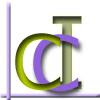5 Ways To Make Your Call Center Performance More Efficient
5:34 AM
Posted by CCI - Call Centers India
VoIP technologies are indispensable for the contact center efficiency enhancement as you can move to a distributed contact center or employ at-home agents to
* reduce facility expenses and salary rates;
* overcome the language barrier and cultural differences;
* smooth out peak load periods and develop a reliable business contingency plan.
As TechTarget research data shows, at-home agents:
”* have a 10% attrition rate, which is significantly lower than for on-site staff;
* are 25% more productive.
* cost $11 less/hour.”
But no matter whether you choose a distributed model or a local one, to get maximum benefits from your VoIP contact center, you need special software that is described below.
1. Automate Call Processing and Release Your Staff for More Complicated Tasks
If you need to
* ensure that your clients timely get the information that they are looking for;
* release your staff for tasks that require their experience and expertise,
provide your clients with a self-serving facility with a voice portal or interactive voice response (IVR) applications.
2. Overcome Call Peak Loads and Cut the Waiting Time
Generally, people hate to waste time searching for an “appropriate employee” to answer their questions. To decrease this waiting time and smooth out call peak load hours you can use
* skill-based routing (SBR) software, integrated with your CRM and ERP software that will automatically route calls to:
** a manager who usually works with a calling client or
** an operator with demanded skills that is defined from information about a calling client (such as his/her previous requests or his/her location and language he/she speaks) and operator’s product expertise, overall skill-level and language capability;
* virtual queuing software, with which your clients will just leave their contact information and return to their business, while an operator will automatically call them back.
Note that integration of telephony and CRM software accelerates client request processing also by providing your staff with information about the calling client retrieved from your databases.
3. Save Your Time and Effort by Getting All Requests from a Single Inbox
Would you like to save your time on checking client messages from different sources (phone, fax, email, website etc.) and timely service all requests?
With unified messaging and voice mail service, you can collect messages from all sources in a single mailbox available 24×7 from both your e-mail client and phone, and thus guarantee your clients get a timely response to all their questions, regardless of where they sent them from.
4. Get a Single Solution to Improve Call Processing at All Company Offices
If you look for a powerful tool that is able to streamline call processing at all company sites and support at-home operators, pay attention to software-based attendant consoles.
With a software-based console, your operator, regardless of his/her location, can:
* get incoming calls from several phone lines and route them to appropriate employees;
* find quickly an employee/a phone number;
* send a text/voice message;
* record a call.
This software also supports intelligent call queuing.
5. Enhance Your Call Center Staff Productivity
Today, almost all large and mid-sized companies deploy call accounting software to control/reduce employee telecom costs. However, you can do much more with it!
Advanced call-accounting software provides you with various reports, built on the base of call detail records (CDRs) received from your IP PBX that you can use to:
* determine peak phone network hours and compose an appropriate call plan;
* track unanswered calls and control, if your employees return calls in a timely manner;
* track employee “friends & family” calls and set special rules to limit and even deny such communications at peak load hours.
Conclusion
To do the most of your VoIP call-center, you need just to choose appropriate software:
* a voice portal or IVR applications to automate processing of up to 80% of incoming calls and release your staff for complicated tasks;
* skill-based routing or virtual queuing software to smooth out call peak loads and cut down the waiting time;
* unified messaging and voice mail service to save your time and effort by getting all requests from a single inbox with;
* a software-based attendant console to get a single solution to improve call processing at all your sites, regardless of their location;
* call-accounting software to decrease telecom costs, control your staff daily activities and enhance employee productivity.



Post a Comment